Get ready for an amazing 10-day itinerary in France!
France is much more than just Paris, explore other regions to make sure you’ve fully seen the country. We propose that you stay for over a week. There’s no shortage of emotions, from the heart of the capital to the countryside, discover vibrant cities, mountain-perched castles, chic shops, and of course, world-class cuisine.
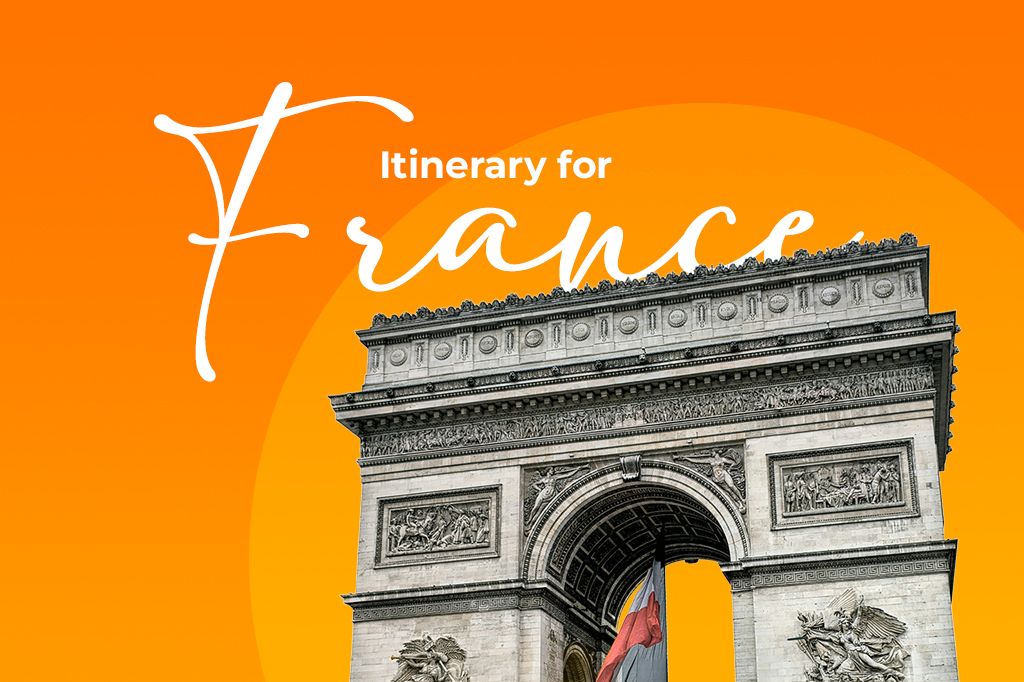
Picture by Peter Y. Chuang on Unsplash
Day 1-3: Paris
Welcome to Paris, the City of Lights! one of the world’s most visited cities, and for very good reasons. Our 10-day itinerary in France kicks off with well-known spots. Although receive a lot of attention, we can’t pass them by.
Paris welcomes all with open arms, whether you love history, art, or nature. There’s something special for every taste: dive into Sainte Chapelle’s history, explore art at the Louvre, or unwind in Tuileries Garden.
Join us on this Parisian journey where every corner whispers a unique tale.
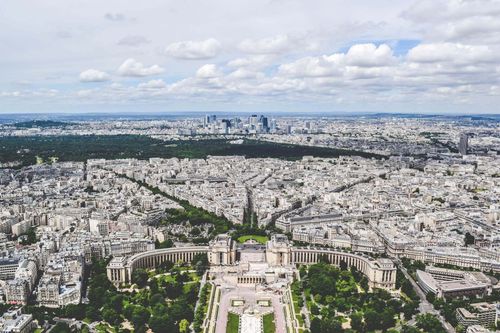
What to See and Do in Paris
- Day 1: Explore the Louvre and its world-famous art collection. Visit the nearby Tuileries Gardens.
- Day 2: Discover Notre Dame and Île de la Cité. Take a stroll along the Seine River and visit Sainte Chapelle.
- Day 3: Spend the day at the Eiffel Tower and Arc Du Triomphe, taking in the city view from Trocadéro.
The Louvre – Even if art isn’t your thing, it is a must. Once a royal residence, the Louvre has unique architecture and a massive art collection. It features sculptures by Michelangelo, Bernini, and Canova, plus paintings by Da Vinci and Delacroix, and more. We suggest you devote at least two hours to this museum. Don’t forget you need tickets, so get them before.
Tuileries Gardens – are stunning gardens that are like havens from the Louvre to the Place de la Concorde. You could also enjoy beautiful flowers at the Jardin du Luxembourg. These are just two of the city’s best green spots.
Île de la Cité – a small island, considered the ancient cradle of Paris, with some of the oldest monuments, like Sainte-Chapelle, Notre Dame, The Flower Market, and The Hôtel-Dieu.
Notre Dame – This special church is still in use today and is a great example of French Gothic architecture. This one would add a touch of grandeur to your 10-day itinerary, serving as a grand welcome to France. Indeed, it represents endurance, for surviving major events like hosting Napoleon I’s crowning, the French Revolution, and two World Wars. It’s best known for its amazing stained-glass windows and the gargoyles up top. Sadly, nowadays you can only admire it from afar but it’s worth it!
Sainte Chapelle – is a Gothic chapel with the world’s most beautiful stained-glass windows displaying scenes from the Bible.
Related: Discover more about the iconic places in Paris, check out our guide
Eiffel Tower – Start your visit to Paris with the city’s symbol. Check out its impressive design, and amazing views. For a relaxed experience, go in the morning or evening on weekdays and book tickets online to skip lines. Explore Trocadero for a perfect sunset view as the Eiffel Tower sparkles every hour for five minutes. Trocadero Gardens are free and safe at night. Enjoy the scenic beauty around you!
Arc Du Triomphe – a quick 16-minute metro ride or a 32-minute walk from the Eiffel Tower. The Arc de Triomphe, another symbol of Paris, was ordered by Napoleon to celebrate French victories. You can admire it from a distance for free and walk around and check out the details on its outside. Certainly, we prefer to take a guided tour to see it all, and if possible get to the rooftop to unveil a whole new world.
Day 4-5: Lyon
Lyon, the culinary capital of France, is known also for its architecture and historical role. With roots dating back to Roman times, it is a dynamic city where the Rhône and Saône rivers meet. What’s more, it was once the silk-making capital of Europe, earning its status as a UNESCO World Heritage Site. Today, it remains a top destination for culture and food lovers, a must-visit on your 10-day itinerary in France.
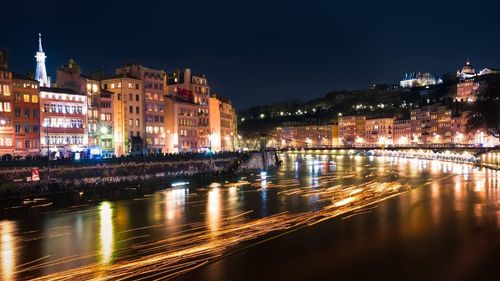
What to See and Do in Lyon
- Day 4: Explore the Old Town (Vieux Lyon), visit the Basilica of Notre Dame de Fourvière, and try local cuisine.
- Day 5: Explore the traboules, visit the Musée des Beaux-Arts, and enjoy the vibe along the Saône River.
Explore Old Town – a great place to start your visit. It sits along the Saône River, enclosed by Renaissance mansions with hidden courtyards and red-tiled roofs. Check out the medieval Saint-Jean-Baptiste Cathedral with its lively astronomical clock. Don’t miss the Museum of Miniatures and Cinema for scale models by Dan Ohlmann. It’s a picturesque area blending history with elegance.
Basilique Notre-Dame de Fourviere – was built to thank the Virgin Mary for protecting the city during the Franco-Prussian war. It’s now a major symbol of the city, perched on a hill with one of the best views around. Travelers come to celebrate Mary and Christianity, and some hike up for a morning walk and a beautiful sunrise.
Are you making the most of every travel? See what the Best Travel Apps can do for you
Try local cuisine – Lyon is known for its top bistro-style ‘bouchon’ restaurants. These casual places have simple yet delicious menus using traditional Lyonnaise cuisine, perfect for those craving unique. We highly suggest Le Bouchon des Filles, which means “The Girls’ Bouchon” – indeed a kitchen run by women. The menu is authentic yet lighter on calories than others.
The Traboules – about 400 or 500 hidden passageways (they are not sure about the exact number) that wind through buildings, and streets, and sometimes look like regular stairs. Between Lyon’s old town and Croix-Rousse, these paths form a big network. They’ve seen a lot, from the silk trade to secret meetings in World War II. Since they’re hidden, you’ll need a guided tour or, grab a map and try to find them on your own.
Museum of Fine Arts – Step into a vast art collection from ancient Egyptian artifacts to modern masterpieces. It could come as a surprise that it boasts over 5000 years of history across 70 rooms. Delve into history with works by iconic artists like Rembrandt, Rubens, Delacroix, Monet, and Picasso. An artistic journey through time awaits, a definite must-visit!
Day 6-7: Normandy
As one of the most popular regions in France, Normandy carries significant historical weight for all of humanity. Not only that, but also has unique hills, footpaths, winding rivers, and extensive coastline. Discover WWII sites like Omaha Beach, the iconic Mont Saint-Michel, and the historical Rouen where Joan of Arc was executed, offering a diverse mix of experiences and stories.
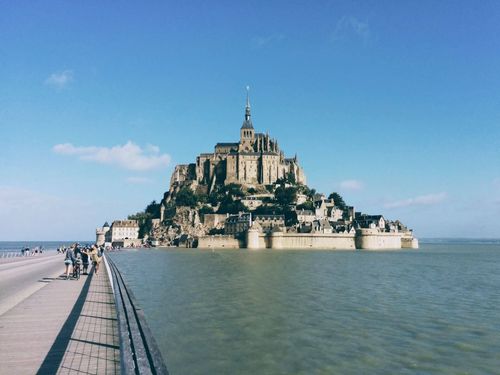
What to See and Do in Normandy
- Day 6: Explore the historic D-Day Landing beaches and the American Cemetery.
- Day 7: Visit Mont Saint-Michel, a medieval abbey on a rocky island.
D-Day Landing beaches – Every year, over a million people visit these beaches to honor soldiers and witness a pivotal moment from World War II. It’s best to explore the 1944 D-Day, like Utah, Omaha, Gold, Juno, and Sword beaches on a guided tour. Note that the weather can be foggy and windy, so bring a windbreaker for easy access.
The American cemetery – the first on European soil in World War II, is located in Colleville-sur-Mer and contains the graves of nearly 9400 dead, and about 1600 names on the Walls of the Missing. Take a moment to honor the brave soldiers who secured the peace we cherish. Here’s a fun fact: it’s the initial scene in the movie Saving Private Ryan.
Mont Saint Michel – is a medieval abbey perched on a rocky islet in Normandy and a must-add to your 10-day itinerary in France. Its charm dates back to the 8th century when it became a Christian pilgrimage site. The abbey stands out in the bay, looking surreal during high tide, like it’s floating in the water. During low tide, you can walk around it on the sand, seeing it from a different angle. It can be risky, so get a guide for safety. Plan about 2 hours to explore the abbey and town.
Related: Paris Bucket List: An Off-The-Beaten-Path Guide
Day 8-9: Provence
Provence, in southeast France close to Italy and the Mediterranean, has diverse landscapes—Alps, Camargue valleys, vineyards, olive groves, pine forests, and lavender fields. Cities like Nice, Saint-Tropez, and Cannes add glamour to the French Riviera. Best known for scenic beauty and centuries-old wine tradition, Provence is definitely not to be missed.
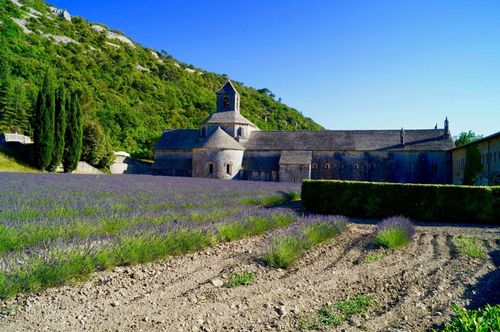
What to See and Do in Provence
- Day 8: Travel to Avignon and explore the Palais des Papes.
- Day 9: Explore the lavender fields, and enjoy the beauty of Provence.
Avignon – once the seat of Catholic popes, it stayed under papal control until becoming part of France. Its legacy is seen in the impressive Palace of the Popes in the city center, surrounded by medieval stone walls. Explore Avignon’s lively scene with shops and cozy cafes. Be inspired by the Holy Father’s palace, and enjoy the best views from Rocher des Doms Park.
Palais des Papes – the world’s largest Gothic palace. Its gigantic presence with grand walls tells the tale of Avignon as the Christian capital, hosting nine popes for political reasons. Explore its history with a guided tour for interactive insights into the palace’s past. Admire 14th-century frescoes, and with entry tickets, scale a tower for 360 views of the city. A voyage through time from Avignon’s skyline.
Lavender Fields – Experience the magic of Provence when lavender blankets the land from June to August. Also, locals celebrate this floral spectacle with a festival in August during harvest time. Drive through the lovely hills of Digne les Bains, where endless fields of lavender create an awe-inspiring scene. Don’t miss the chance to stop at roadside shops to buy all sorts of lavender products, from soaps and fragrance sprays to honey and other treats.
In a nutshell, Provence is a region for the senses. Its natural beauty and pretty little towns have lured people for ages. Not only that, but it is also a food haven, from lively markets to cozy cafes and vast produce fields.
Day 10: French Riviera
The French Riviera, or Côte d’Azur, is a gorgeous stretch of coast in southern France along the Mediterranean Sea. Despite there being no clear area or official limits for the French Riviera, it starts around Toulon or Saint Tropez and goes to Menton, and it also covers Monaco.
Known for perfect beaches, fantastic weather, and stunning views, it’s a hotspot for the rich, hosting half of the world’s Super-Yachts yearly. Plus, there are cool festivals like the Cannes Film Festival and Monaco Formula 1 Grand Prix. Really, don’t think twice about adding it to your 10-day itinerary in France.
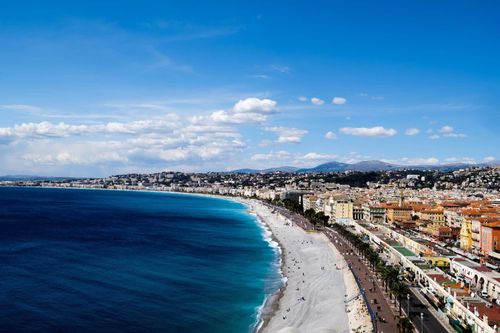
What to See and Do on the French Riviera
- Visit Nice.
- Explore the Promenade des Anglais and the Old Town.
- Enjoy the vibrant atmosphere along the Mediterranean.
Nice – often called the prettiest city on the French Riviera. It has lovely beaches, azure water, and charming old buildings. It’s between the Alps and the Mediterranean Sea, it’s near Italy, so you can easily take a day trip. As the 5th biggest city in France, it’s seen as the capital of the French Riviera. Here’s a simple yet attractive plan: enjoy mornings at lively markets, afternoons with hill views, and evenings at beachside bars and bistros.
Promenade des Anglais – a splendid 7 km seaside walk in Nice. It’s a mix of city and art vibes with the sea and palm trees alongside. Its name dates back to the 1800s when the English chose it as their go-to winter retreat. It stands as the city’s top attraction, offering a constant view of the azure sea and palm trees.
Old Town – a lively old town with narrow streets and tall, colorful buildings. As you take a walk around, you’ll find shops selling Provençal soaps, and textiles, as well as meats and cheeses, pubs, and outdoor restaurants serving specialties. Don’t skip Parc de la Colline du Château for views of the city and the sea.
